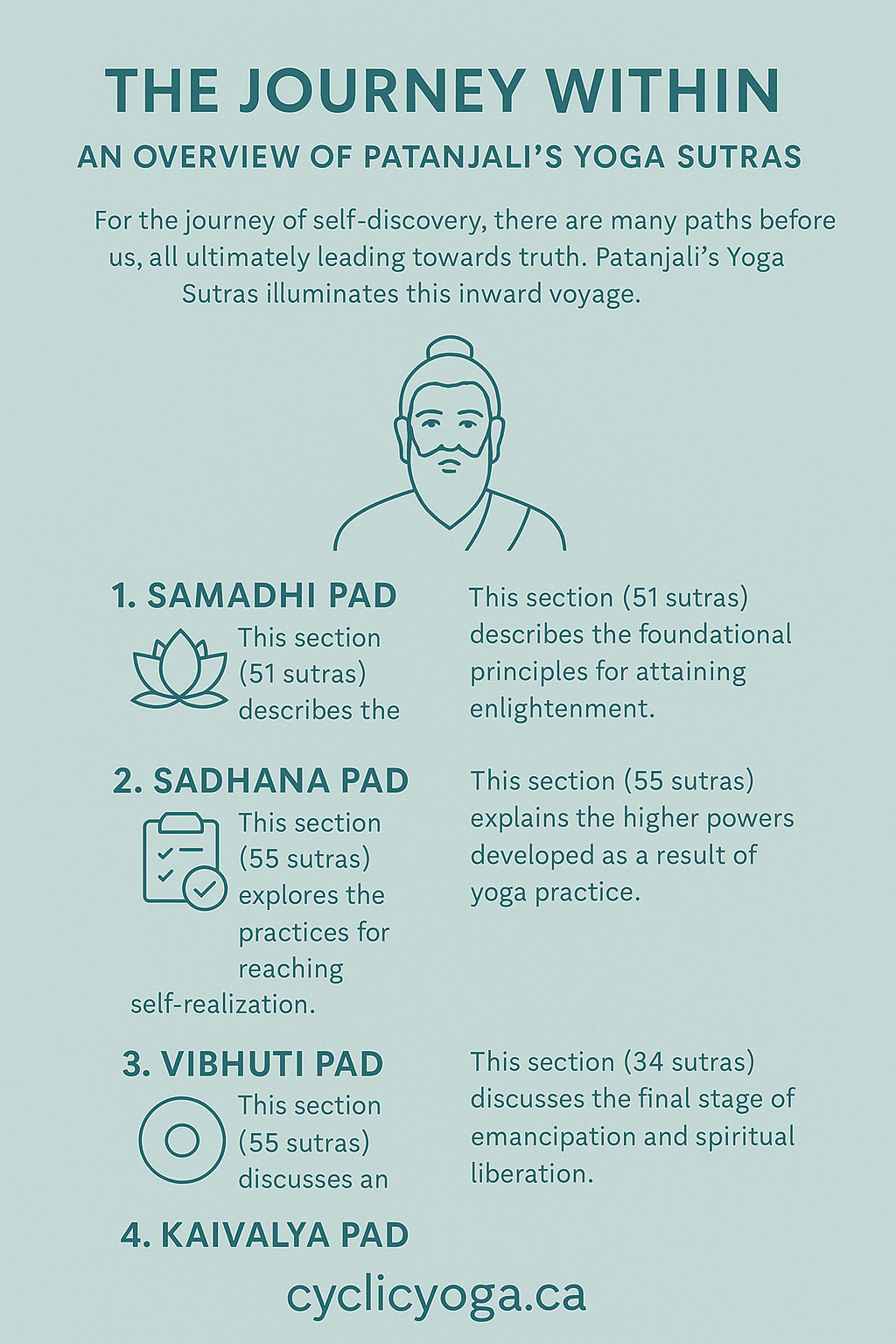The Beginning of the Inner Journey
A Reflection on Patañjali’s Yoga Sutra
To embark on the mysterious and sacred path of self-realization, many gateways lie before the human soul. Though these paths vary in form and method, their ultimate destination remains the same—the pursuit of truth.
The yearning to know truth is a primordial longing embedded deep within every human heart. Since the dawn of creation, the children of humanity have passed down this sacred desire—a longing for reunion, for return to the original source—from generation to generation as a priceless inheritance.
Throughout history, in every age and culture, humans have endeavored to lift the veil of mystery that shrouds existence. Each seeker has drawn upon their own experiences, knowledge, and insight to uncover pieces of this great puzzle, and recorded their discoveries for future generations.
Among these timeless contributions, Patañjali’s Yoga Sutra stands out as a clear and powerful beacon—illuminating the way for yogis seeking union with truth.
This sacred text is the distilled wisdom of a profound inner journey. Patañjali did not merely philosophize—he walked the path, faced its trials, and returned to offer a map for others. The Yoga Sutra is, in essence, a travel journal of the inner realms, now entrusted to humanity as a guide for awakening.
A Gift of Divine Compassion
Though little is known about the details of Patañjali’s life, ancient Indian traditions suggest he lived around 300 BCE. According to the sacred mythology of India, the Divine, moved by compassion for humankind, allowed the mysteries of creation and the truths of union to be revealed on Earth through the Vedas—divine hymns of consciousness.
The sages and seekers of India labored to interpret these truths in ways accessible to all. Patañjali, in this same spirit, composed the Yoga Sutra—a timeless work of 195 aphorisms (sutras), gifted to the world for the spiritual upliftment of humanity.
Yoga Belongs to All
Yoga is not tied to any particular religion, belief system, or cultural identity. It is a universal path open to all—regardless of background, worldview, or faith. Anyone seeking inner growth can benefit from the practices and insights contained within its teachings.
The sutras of Patañjali offer a precise and methodical analysis of the human mind, its structure, its nature, and its potential. He teaches us how to use the mind as a tool—not an obstacle—for reaching our highest spiritual aims.
Structure of the Yoga Sutra: The Four Paths of Integration
Patañjali’s work is divided into four major chapters:
1. Samādhi Pāda – The Path of Illumination
(51 aphorisms)
This chapter outlines the fundamental principles necessary for achieving a deep and sustained state of awareness. Its goal is to guide the practitioner toward Samādhi, the state of spiritual absorption and insight.
2. Sādhana Pāda – The Path of Practice
(55 aphorisms)
Here, Patañjali presents the methods and disciplines that elevate consciousness. The well-known Eight Limbs of Yoga (Ashtanga Yoga) are detailed in this section.
3. Vibhūti Pāda – The Path of Powers
(55 aphorisms)
This chapter discusses the extraordinary powers of the mind (siddhis) that arise through deep practice, as well as the techniques that awaken them.
4. Kaivalya Pāda – The Path of Liberation
(34 aphorisms)
The final section explores the culmination of the spiritual journey, addressing the complete liberation of consciousness and the merging of the individual soul with the Absolute.
A Living Legacy of Interpretation
From the time of Patañjali to the present day, countless thinkers, mystics, and philosophers have endeavored to translate and interpret his sutras into various languages and contexts—each adding their unique light to this sacred scripture.
The Yoga Sutra remains not only a document of ancient wisdom, but a living guide for inner transformation—still as relevant today as it was over two thousand years ago.

